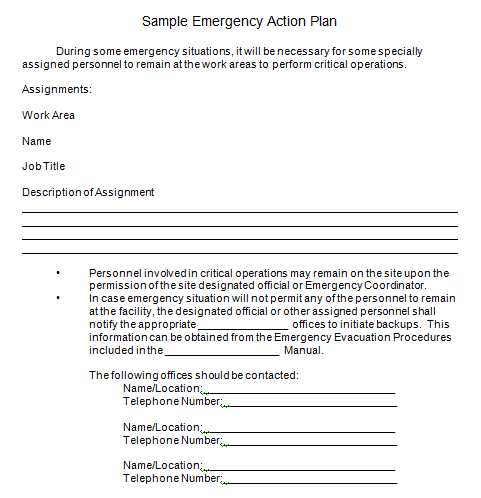Trip Overview and Description
Travel is a popular activity and involves visiting of variety of sites and participation in an assortment of activities. Due to the varied nature of terrain and risk involved with some activity it is essential to plan adequately prior to the excursion.
In line with this one of the most important activities to undertake prior to departure is to prepare an overview of the trip and highlight some of the expected activities (Stellin 2006). This is mainly important due to the fact that it helps in reaching the desired destination.
This overview and description requires that some research is undertaken by the organizer of the trip prior to making travel arrangements. In case the party is undecided on a destination it is necessary to consider the goals of the trip and visit websites which can be very helpful in identifying a suitable destination (Stellin 2006).
Important aspects to consider include weather patterns and peak seasons. This will play a major role in deciding on methods of travel and weighing potential losses or gains from alternatives (Stellin 2006).
Other necessary considerations include holidays and significant events within the locality. In addition to that high and low seasons are often accompanied with changes in prices and will have an influence on the budget and as such must be researched and mentioned in an overview.
In addition to the above points it has been mentioned that a glimpse at government sites may be helpful to see the authority’s position in regard to your proposed destination (Stellin 2006).
Information that may be gleaned from government include terror alerts, penalties for drug possession, medical requirements, traffic and road conditions, aviation standards and potentially useful information on banking and scams, etc. It is also crucial to provide information on age demographics in relation to the trip to ensure appropriate participants are sought.
Leadership
Before embarking on any outdoor activity it is essential to identify a leader for the proposed excursion. The main reason for this is due to the fact that should an emergency arise taking apposition of responsibility is potentially frightening. To avert such a situation it is best to select an effective, capable and trained individual to take on such a role beforehand (Barton 2007).
The leader will take charge during an emergency where a democratic approach to solving the problem may lead to catastrophe. For this reason it is clear that the leader must possess some qualifications suitable for the role.
The main role of the leader is to handle an emergency situation with as much concentration and focus as possible and avoid the distraction caused by panic (Barton 2007).
It is suggested that though hands on involvement is useful, whenever possible a leader should delegate duties and create a sense of involvement. This allows the leader to focus on their key responsibility which is making good decisions and avoiding bad choices.
It has been mentioned that the quality and experience of the leader can have major role to play in the safety and success of outdoor activity. The staff where available and leaders of outdoor activity are undoubtedly the most major influence on safety in any outdoor activity (Barton 2007). For this reason it is recommended that the leader is selected keeping these key traits in mind as opposed to the group disposition.
Trip Itineraries
In an outdoor activity the itinerary is the overall plan of how the activity will be carried out. It includes time for each activity, expected routes and a variety of information on the activity. The importance of the itinerary thus grows based on the duration for the proposed trip or activity (Redmond, Foran & Dwyer, 2010).
A short trip such as a day hike on a well marked trail may not require much work as everyone knows where they are going. However, for a longer excursion a detailed itinerary detailing the specifics such as the size of the party, departure time and return time is crucial to manage safety for larger parties on longer excursions.
Such an itinerary should include the number of people in the party, their expected time of departure and return. In addition to that the equipment taken for the activity and the persons in charge of this equipment may need to be logged as well (Redmond, Foran & Dwyer, 2010).
On completion of the trip any changes in the itinerary can be used to form queries that may be the solution to an emergency that had taken place earlier in the day. Maps and information about the region can be very useful and increase interest in the trip when included in the itinerary (See Appendix A & B).
It is advised to leave the itinerary with a responsible individual who can contact emergency services should there be a need for that (Redmond, Foran & Dwyer, 2010). For example if on an outdoor hiking trip the itinerary could be handed to the ranger in charge of the park or attendant in charge (Redmond, Foran & Dwyer, 2010).
This document is also useful in estimating aspects such as walking pace to maintain during the excursion. In addition to that it is useful in planning various sections of the trip such as rest stops where the group can catch their breath while the leader checks whether the party navigation is on track (See Appendix C).
Equipment
During the management of outdoor activities equipment is crucial to the success and even the completion of various activities. For this reason in planning an outdoor activity it is necessary to carry out a needs assessment to evaluate whet the program requires (Walker & Seidler, 1993).
This needs assessment involves an overview of the situation and makes considerations such as whether the program is new or existing. It is also crucial to consider if the activity is intended to be done for recreation or competitively (Walker & Seidler, 1993). This is evident due to the fact that the needs for an elementary school will vary greatly when compared with those of a college.
In making consideration on equipment to be used for the proposed activity it becomes important to consider the space available for this activity. This is because most equipment comes with directions on the space requirements for optimal operation. Lack of adherence to the considerations therefore renders the installation of such facilities unsafe (Walker & Seidler, 1993).
In addition to the above considerations it is clear that the desired activity will influence the selection and purchase of equipment. Alongside this comes the health and safety of participants involved. It goes without saying that the equipment chosen must first and foremost promote the safety of the participants for it to be considered suitable (Walker & Seidler, 1993).
Water Sources and Treatment
It has been reported that the presence of large volumes of water is often regarded a fundamental requirement for outdoor recreation (Jenkins & Pigram, 2003). This occurs for two reasons namely, the water acts as a medium for recreation or to enhance the appeal of the recreational setting. This position in relation to water lets us know that adequate consideration should be given to the water used in these settings.
The activities undertaken in water include diving, snorkeling and other deep sea activities as well as rafting, canoeing and fishing which are more common in river waters (Jenkins & Pigram, 2003).
Due to the widespread appeal of water for recreation there has been a surge in usage that has led to situation where water quality is lowered and thus unsuitable for outdoor activity. This is especially due to the fact that for activities such as fishing the quality and quantity of water play a major role in popularity (Jenkins & Pigram, 2003).
In addition to the above considerations it has been mentioned that in outdoor activities it is crucial to treat any water taken from unprotected sources (Muller, 2003). This arises due to the fact that such water which is available in these circumstances can cause illness and as such remedial action is necessary.
In addition to that it is advisable to practice proper hygiene in outdoor activities (Muller, 2003). Untreated water comes with potentially harmful micro organisms such as Giardia which if ingested can cause serious medical problems to an individual (Muller, 2003).
Such organisms are introduced to the water due to animal activity or sewerage that seeps into the water from nearby settlements. For this reason it is advisable to purchase pills used for water purification prior to visiting these areas.
Weather Related Information
It is important that during any outdoor activity the collection of information is carried out as an ongoing process (Dickson & Gray, 2012). Information such as predictions on weather patterns can be a major factor in relation to safety of outdoor activities.
For this reason it is essential to update the party in relation to most current weather prior to embarking on an excursion while taking time to consult on any expected changes in weather (Dickson & Gray, 2012).
In this regard it has been observed that the internet and mobile technology has played a significant role in averting potential crisis (Dickson & Gray, 2012).
Due to this technology it is now possible to view live radar images and examine river height gauges within minutes as opposed to hours in the past. Some information that may be relevant includes the expected temperatures, water levels in rivers and wind related information (See Appendix D).
However, despite the advances in technology it has been observed that communicating weather information may at times be difficult due to remoteness. In such instances it has been suggested that good knowledge of the locale may prove useful in the outdoor activity (Dickson & Gray, 2012).
Transportation
This aspect forms a significant part of the budget allocated for any outdoor activity (Harrison, 2012). For this reason a properly planned outdoor activity will require the analysis of various options for transportation.
In this regard some considerations to make will include the type of vehicles, whether to lease or outsource transport another company, among other considerations. The age demographics of the group also play a role in selection of appropriate mode of transport for the activity.
It is important to keep in mind that there are significant risks and legal implications to be considered in relation to transportation. The individual in charge must confirm efficiency and safety standards offered by any proposed contractor (Fulbrook, 2005).
The distribution of routes and scheduling of transport must also be carefully coordinated and any changes quickly communicated to other members of the transportation unit. This is believed to be a sure way to minimize disorder and lack of satisfaction during the activity.
Rules and Regulations
In many outdoor activities there is a significant degree of risk involved which with the guidance of an experienced guide can be overcome. However, in certain instances there may arise occasions when due to unforeseeable circumstances an injury or accident occurs.
It is reported that many times this occur due to lack of adherence to the laid down rules and regulations (Harrison, 2012). In order to avoid any subsequent legal actions that could come about it is considered wise to provide a document containing the rules and regulations that will govern the trip and potential risks involved.
In instances where such a document is produced and signed by participants, the organizer or individual in charge can be considered legally protected from legal action. This however does not imply that negligence is tolerated but acts as a barrier to protect the organizer from unfair legal actions (Harrison, 2012).
Risk Assessment and Management
In operating a successful outdoor program one of the major tasks is the evaluation and management of risks. The identification of risks involved can be achieved by using four specific categories namely field, operational, financial and strategic risks (Harrison, 2012). Field risks include environmental hazards such as flash floods.
Operational risks include poorly managed equipment and inappropriately trained staff. Financial risks include unexpected financial losses due to increased expenditure during seasonal changes. Strategic risks include issues that may arise due to lack of vision and foresight (Harrison, 2012).
Once all the potential risks have been identified it is important to categorize them based on their likelihood to provide a clear picture of issues that need to be tackled (See Appendix E). Based on the picture presented it becomes easier to identify strategies to counter these potentially risky situations (Harrison, 2012).
This process and the strategies identified form the organization’s risk management program and should be embraced within the organization as part of organizational culture (Harrison, 2012).
Among the important aspects that may be included in such a program include possible additional training that should be given to staff. In addition to that it is crucial to identify and prepare material that needs to be shared with participants prior to the activity.
Emergency Action Plan
It should be noted that an emergency action plan (EAP) is a very essential component of any outdoor activity. There is no standard EAP for all outdoor activities based on the fact that facilities, communities, resources and communication facilities available vary a great deal (Moffitt, 2011). In addition to that the plan should be distributed t relevant personnel and participants as an invisible EAP is worthless.
The EAP should include guidelines to be followed in various scenarios such as fires and other emergency situations. It must include guidelines on the evacuation routes and procedures to be followed in the event of an emergency (Moffitt, 2011). Such a plan should also include telephone numbers of hospitals and medical facilities close by to assist with casualties and other medical related issues (See Appendix F).
As is seen in the appendix the document is a detailed writing that categorizes risks and clearly defines response to the risks within the organization. It also provides information on the staff in charge in case of an emergency and the training received for the situation (CDC, 2004).
Contingencies
Just as with any activity there is a need for some preparatory actions made to handle unexpected situations in business. For example, a camping site may be prepared to accommodate twenty tents but due to circumstances be forced to deal with twenty five tents suggesting an unexpected increase in the size of the party.
These situations call for an alternative plan in place to handle such scenarios (Martin, 2006). In addition to such circumstances contingency planning should cater for activities that can be undertaken when weather interrupts or causes postponement of one activity in the itinerary. Such planning ensures participants are kept engaged and receive and experience worth their while.
Miscellaneous
In addition to all the above mentioned plans and guidelines there is still need to cater for additional requirements that may arise in the course of outdoor excursions. An example of this occurs where a member of the visiting party is accompanied by an aged person or a young infant.
In such cases the organization will need to have prepared or arranged to acquire some equipment such as safety seats for babies or wheel chairs to cater for senior citizens. To provide a memorable and efficient outdoor trip there is no limitation to the extent of preparation necessary. It is not uncommon to find that the more prepared organization attracts more clientele simply as a result of this.
References
Barton, B. (2007). Safety, risk and adventure in outdoor activities. London: Paul Chapman Publishing.
Breckenridge. Sample Itineraries. Web.
CDC. Emergency Action Plan. (2004). Web.
Cyborlink. China Business Etiquette, Culture, & Manners. (2012). Web.
Dickson, T., & Gray, T. (2012). Risk Management in the Outdoors: A Whole-of-Organization Approach. Melbourne: Cambridge University Press.
Fulbrook, J. (2005). Outdoor activities, negligence and the law. Hampshire: Ashgate Publishing Company.
Harrison, G. (2012). Outdoor Program Administration: Principles and Practices. Printed in the USA: Sheridan Books.
Jenkins, J., & Pigram, J. (2003). Encyclopedia of Leisure and Outdoor Recreation. London: Routledge.
Martin, B. (2006). Outdoor Leadership: Theory and Practice. Printed in the USA: Human Kinetics.
Moffitt, J. (2011). Day Camp Programming and Administration: Core Skills and Practices.
Muller, J. (2003). The Colorado Year round Outdoor Guide. Golden, CO: The Colorado mountain Club Press.
Redmond, K., Foran, A., & Dwyer, S. (2010). Quality Lesson Plans for Outdoor Education. Champaign, IL: Human Kinetics.
Stellin, S. (2006). How to travel practically anywhere. New York: Houghton Mifflin Company.
Walker, M., & Seidler, T. (19993). Sports Equipment Management. London: Jones Bartlett Publishers International.
Yellowstonepark. Interactive map. (2011). Web.
Appendix
Appendix A: Sample Map of Yellow Stone Park
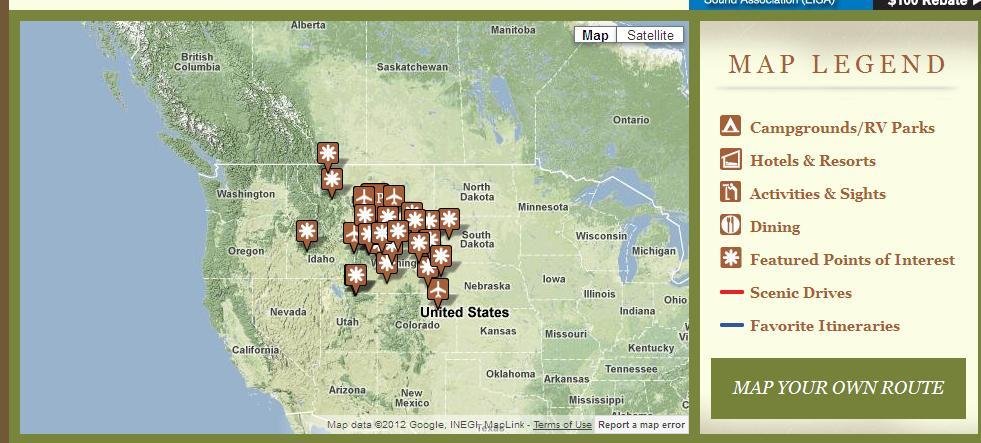
Appendix B: Research and Supplemental Information on China

Appendix C: Sample itinerary
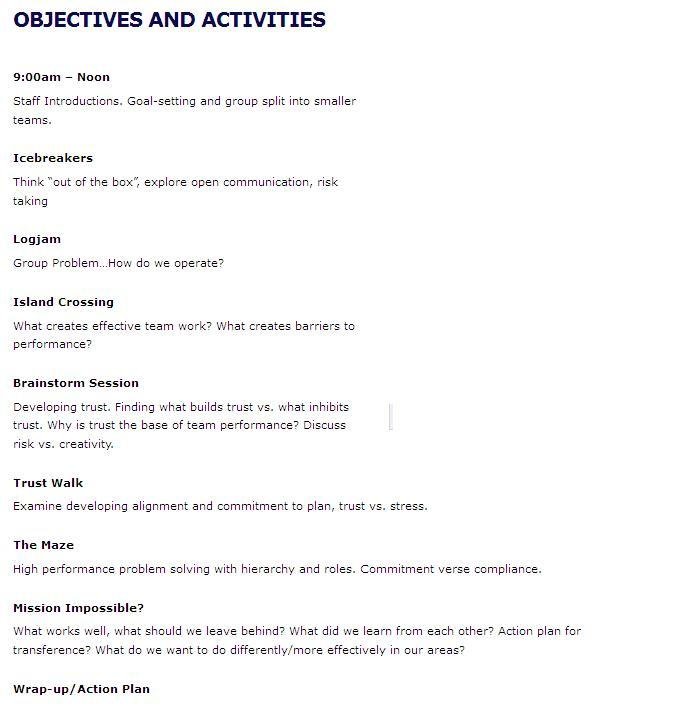
Appendix D: Sample Weather Information
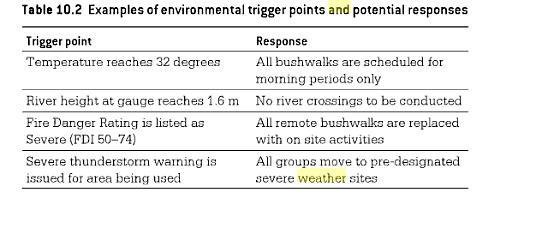
Appendix E: Sample Financial Risk evaluation
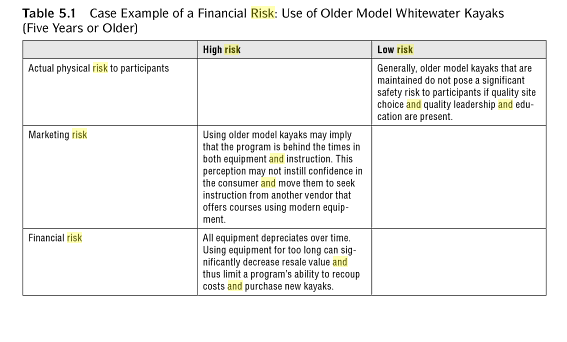
Appendix F: Sample Emergency Action Plan
